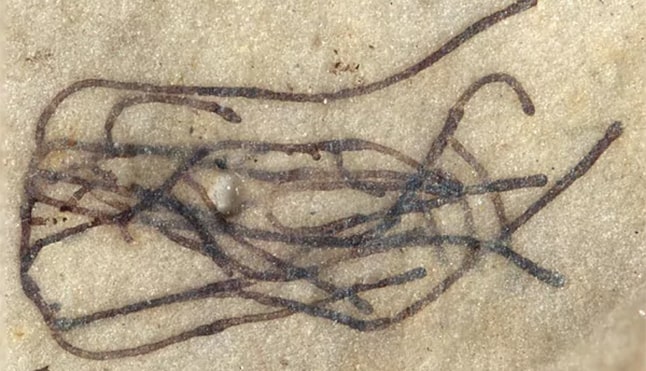
Printed on the rock, in an area that is now dry land but was the seabed millions of years ago, scientists have discovered the remains of the oldest green algae to date. They are microfossils with more than 1,000 million years, related from an evolutionary point of view with the ancestors of the first terrestrial trees and plants. They have been discovered near the city of Dalian, in Liaoning province, in northern China. They are barely visible to the naked eye, two millimeters in length, and belong to a species known as Proterocladusantiquus.
Researchers from Virginia Tech University (USA) knew the age and typology of sedimentary rocks in this region, from previous studies. "There are maps of the world only on rocks, some very detailed," explains ShuhaiXiao, a researcher in the department of Geosciences. "Thanks to those maps and records established by previous work, we have explored the area with rock hammers, magnifying glass in hand." The tiny marine algae they tracked lived and died in a shallow sea, trapped under a thick blanket of sediment, and cooked due to high temperatures, retaining their original shape but changing their color. "Like any overcooked vegetable, algae end up turning brown or even black," says the researcher.
Millions of years later, the sediment rose from the seabed, which would eventually become dry land, and the fossils could be recovered by the team of geologists, which included scientists from the Nanjing Institute of Geology and Paleontology in China. Already in the laboratory, the researchers applied mineral oils to the surface to increase the contrast and analyzed them under an electron microscope. Their findings, which appear in the latest issue of NatureEcology & Evolution, reveal the most remote fossil record of a green algae found so far, 200 years older than the previous record.
Evolutionary importance
"These new fossils suggest that green algae were already important players in marine ecosystems long before their descendants moved on and conquered the mainland," Xiao said. These Proterocladusantiquus specimens show multiple branches, stems in an upright position and specialized cells - known as acinets - that are very common in this type of fossil. Taken together, these characteristics are what reveal that the fossil is a green algae with a complex multicellularity, "says Xiao, adding that there are currently some species of green algae that closely resemble the fossils described in the article. "Specifically, a group known as siphonocladales, particularly similar in shape and size."
There are three main types of seaweed: brown (Phaeophyceae), green (Chlorophyta) and red (Rhodophyta), in addition to thousands of subspecies for each type. In 2017, a team of Swedish researchers led by Stefan Bengston found fossils of 1.6 billion years old in red algae in India, a finding that delayed the appearance of multicellular organisms in the tree of evolution by 400 million years. "If confirmed, Stefan's finding would also imply the existence of green algae in the same period," says Xiao. "Green and red algae are evolutionary twins and should have been born more or less at the same time."
Vegetal kingdom
The plant kingdom -including microalgae- supposes today most of the biomass of the planet; in total it contains around 500,000 million tons of carbon, more than four times that accumulated by all other living beings. However, until 500 million years ago, the continents were almost completely devoid of life, except for small carpets of bacteria and, perhaps, some fungi. But once the plants were able to take root in the ground, forests, shrubs, and swamps began to grow. They built a carpet of greenery, flooded the atmosphere with oxygen, and made it possible for animals to also leave the seas.
However, Xiao acknowledges that not all geobiologists agree on this point. "Some scientists think that plants started in rivers and lakes, and later conquered the ocean and land later," he added.
Digital Newspaper El Mundo
